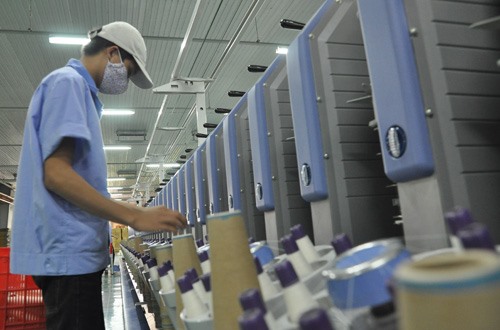 Economy
Economy

Vietnamese businesses need to better understand China’s trade procedures and market to achieve higher export turnover, heard a conference yesterday on Chinese market information for Vietnamese businesses.
 |
| Vietnamese businesses need to better understand China’s trade procedures and market to achieve higher export turnover, heard a conference yesterday in Hà Nội. — Photo vnexpress.net |
HÀ NỘI — Vietnamese businesses need to better understand China’s trade procedures and market to achieve higher export turnover, heard a conference yesterday in Hà Nội.
“Not only did the conference bring information on the Chinese market and opportunities for major Vietnamese products to China such as rice or coffee, it also helped answer domestic businesses’ questions on export procedures into China,” said Đỗ Kim Lang, Deputy Director General of the Vietnam Trade Promotion Agency (Vietrade) at the conference.
Vietrade and the Ministry of Industry and Trade (MOIT) held the conference in collaboration with the Việt Nam’s trade promotion office in Chongqing, China, focusing on export opportunities into Chinese market.
The conference centred on China’s market information and export opportunities for Việtnamese firms, aiming to increase Việt Nam’s exports into China and attract investment from China to Việt Nam.
According to Đào Việt Anh, Việt Nam’s Trade Promotion Chief Representative Officer in Chongqing, China is one of Việt Nam’s major importers, with many favourable circumstances allowing for trade between the two countries as China has a large demand for Vietnamese products such as rice, tapioca, rubber, fruits, tea leaves and seafood.
However, Vietnamese goods have long encountered difficulties getting into China due to problems in customs procedures, quarantine, lack of information and connection.
Anh reminded Vietnamese businesses operating in China to go through proper channels such as trade representatives and trade promotion offices, validate Chinese partners’ actuality and credibility, and to use internationally recognised contracts and practices.
Businesses should also have a deeper understanding of the Chinese Government’s rules on imports and market regulations on products quality as well as customers’ demand. They should also participate in trade promotion activities.
In 2015, according to Việt Nam’s General Department of Customs, total export and import turnover between Việt Nam and China reached US$66.6 billion, having increased by 13.4 per cent compared to 2014. Of which, Việt Nam’s exports to China accounted for $17.1 billion with an increase of 14.8 per cent, while importing $49.5 billion with an increase of 13.3 per cent.
While China’s imports from other ASEAN nations have dropped, import turnover from Việt Nam continued to be strong. At the end of July 2016, Việt Nam has become China’s largest trade partner in ASEAN with total bilateral trade volume at $52.26 billion, though down by 1.3 per cent compared to the same period in 2015. — VNS




